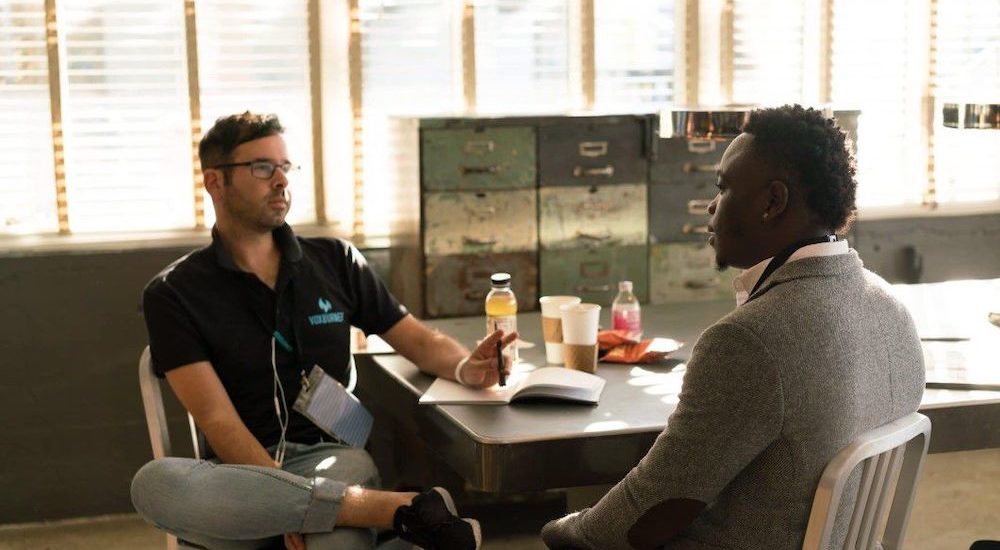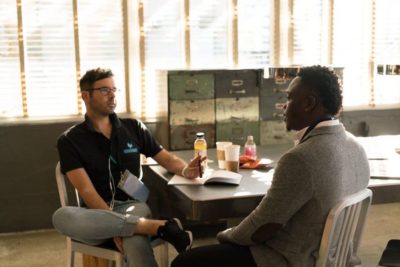- August 3, 2022
- Posted by: David Marshall
- Category: Management, Productivity

The American workforce has been largely working remotely for the last two years, and for the most part, everyone has loved it.
(Well, almost everyone. I’m not a fan of it.)
They love working at home, they don’t miss the commute, and many people are even leaving their jobs (without another one in the wings) when they’re being forced to go back to the office.
Now, I’m all for people enjoying their jobs, but I think we’re missing out on a very important part of office life that’s going to affect our innovation, our professional development, and even our total job satisfaction.
I’m talking about water cooler conversations.
I realize many companies don’t even have water coolers these days, so the term may be a little outdated (sort of how we “dial” our smartphones), but a lot of companies have break rooms, kitchenettes, and other places of common gathering in the office for brief conversations.
 Or they have a company culture where it’s acceptable to pop in on a colleague at their cubicle or desk. In open-concept offices, people think nothing of rolling their chair to their neighbor’s desk for a quick chat.
Or they have a company culture where it’s acceptable to pop in on a colleague at their cubicle or desk. In open-concept offices, people think nothing of rolling their chair to their neighbor’s desk for a quick chat.
I actually encourage this practice. Sure, there’s some socializing and chatting going on, not to mention the occasional bit of office gossip, and I’m fine with that because it’s all part of the workplace environment.
The important thing that happens during these water cooler conversations is the exchange of ideas: The spur-of-the-moment idea that gets expressed. The quick question to the knowledgeable person who shares a larger lesson. The deepening of work friendships that end up keeping people from job-hopping every two or three years.
I believe we have lost that sense of community and camaraderie that comes from a group of people sharing the same space, day after day, working toward a common goal. We don’t get to see each other, read each other’s body language, get to have private conversations.
Think about how many developments at a company started with two people just chatting at the water cooler/kitchenette/break room. Someone said, “What if we were to. . .?” in response to something the other person said, often as a throwaway thought.
The question is also a throwaway question, someone just musing out loud. An idea popped into their head, and because there was no barrier to expressing it, the person just. . . said it.
No phones to dial, no Zoom meeting to schedule — it’s a rapid-fire thought that just pops out. Before the pandemic, thousands of conversations like that were taking place all over the work world. Most of them were ignored and forgotten. But once in a while, one of them would stick. The other person would say, “You know, that’s not a bad idea.”
They would dig into the issue, have a couple of meetings, develop a proposal, and a new product or service, or even a whole new company, would be born because two people were having simple water cooler conversations, and someone said, “What if we were to. . .?”
We can’t do that as easily in today’s world. People don’t just call each other to chat when they’re working remotely. They don’t muse out loud or ask silly questions. In short, this important method of brainstorming is lost.
Things Are Not Necessarily Better Now
I’ll admit, people love the freedom of working from home. But I think they’re also getting bored.
Home is special because it’s our haven away from everything else. We leave home, go to work, and we can’t wait to get back home. We go on vacation, and enjoy the time away, but we can’t wait to get back home. And now we’re home 24 hours a day, 7 days a week, and it’s not so special.
People roll out of bed and go straight to work. There’s no separation between work space and home space. The commute is the 20 or so feet to your desk. There’s no one to talk to. And your pets are terrible conversationalists.
Meetings have even become a drudge as people are burned out on Zoom. People thought we would finally see the end to needless meetings and those meetings that “could have been handled with an email.” Instead, people are being inundated with more meetings because they’re so easy. And in some companies, associates are expected to be on Zoom all day long, with cameras on, to prove that they’re working.
(I’ll say this about monitoring employees: If you hired people who need to be monitored constantly in order to ensure that they’re working, that’s your fault. You made poor hiring decisions, and that reflects on you as a manager. Your job is to hire slow, fire fast. So if your employees require constant monitoring, you need to reexamine your hiring process.)
So what’s the solution? We need to return to the office. We need to get back to our meeting places and workspaces. We need those random, casual conversations. We need the serendipity of ideas that comes from two people being in the same place and talking about a work problem to come up with a solution that neither of them would have thought of on their own.
We need for the mentees and the mentors to get back in the same room, so the one can pop in on the other and say, “Do you have a minute? I need some help.”
I know everyone is enjoying their time at home, but we’re missing out on so much that I think it’s time to get back to the office and reclaim the most important part of being together: the chance to create new ideas and have deeper conversations because we’re sharing the same space.
I’ve been a manufacturing executive, as well as a sales and marketing professional, for a few decades. Now I help companies turn around their own business, including pivoting within their industry. If you would like more information, please visit my website and connect with me on Twitter, Facebook, or LinkedIn.
Photo credit: Nappy (NegativeSpace.co, Creative Commons 0)

